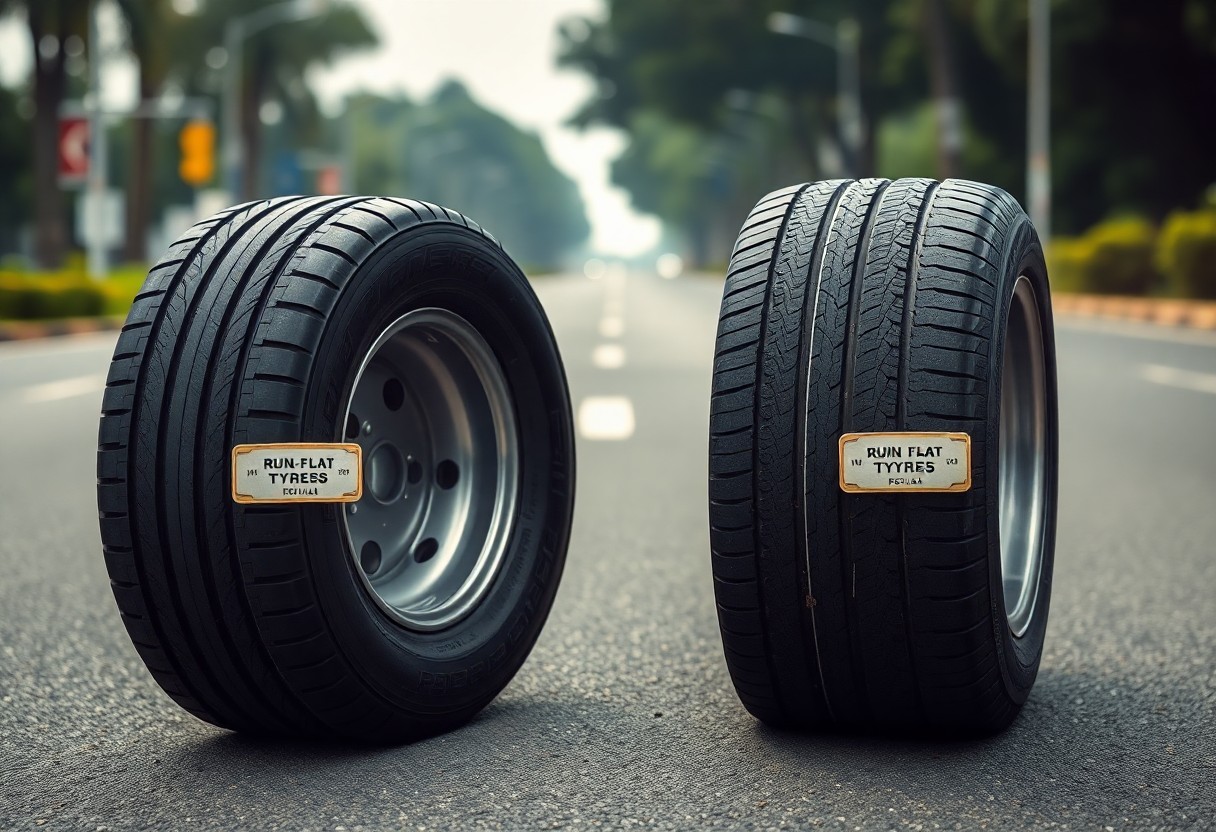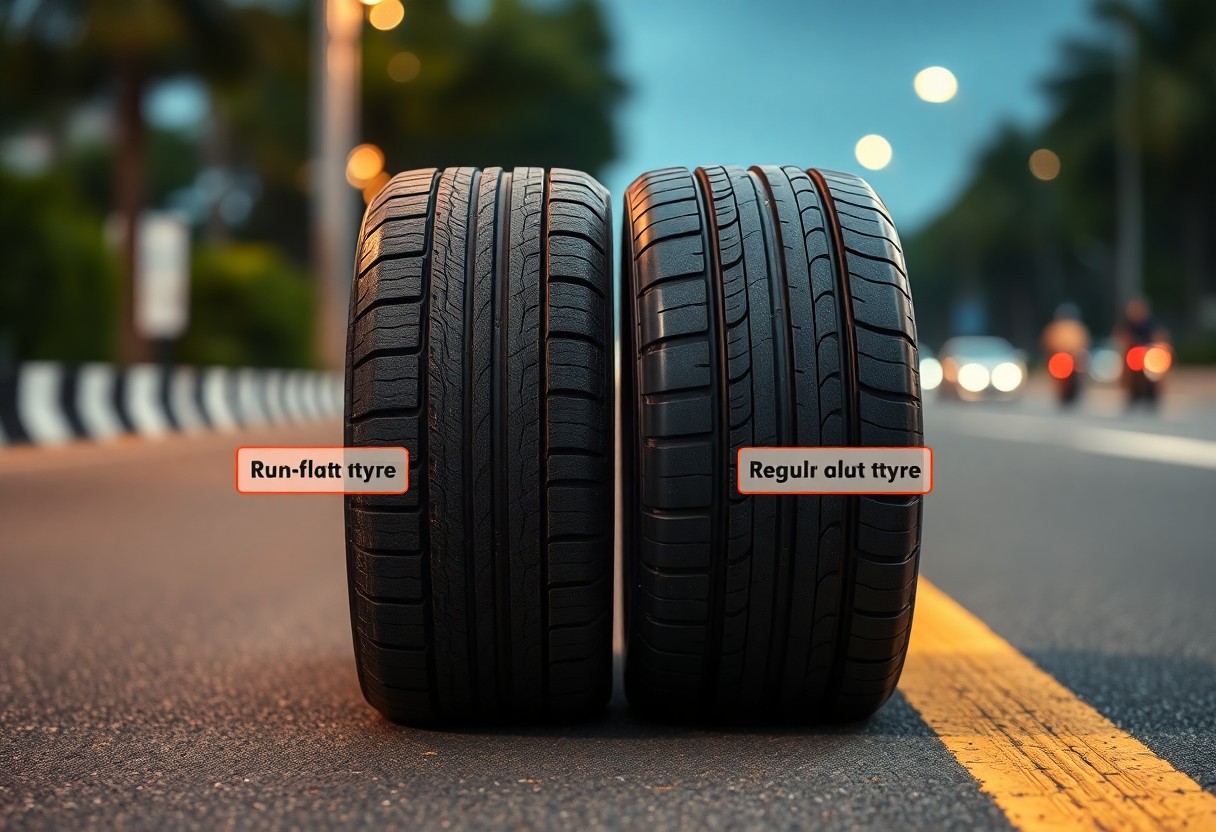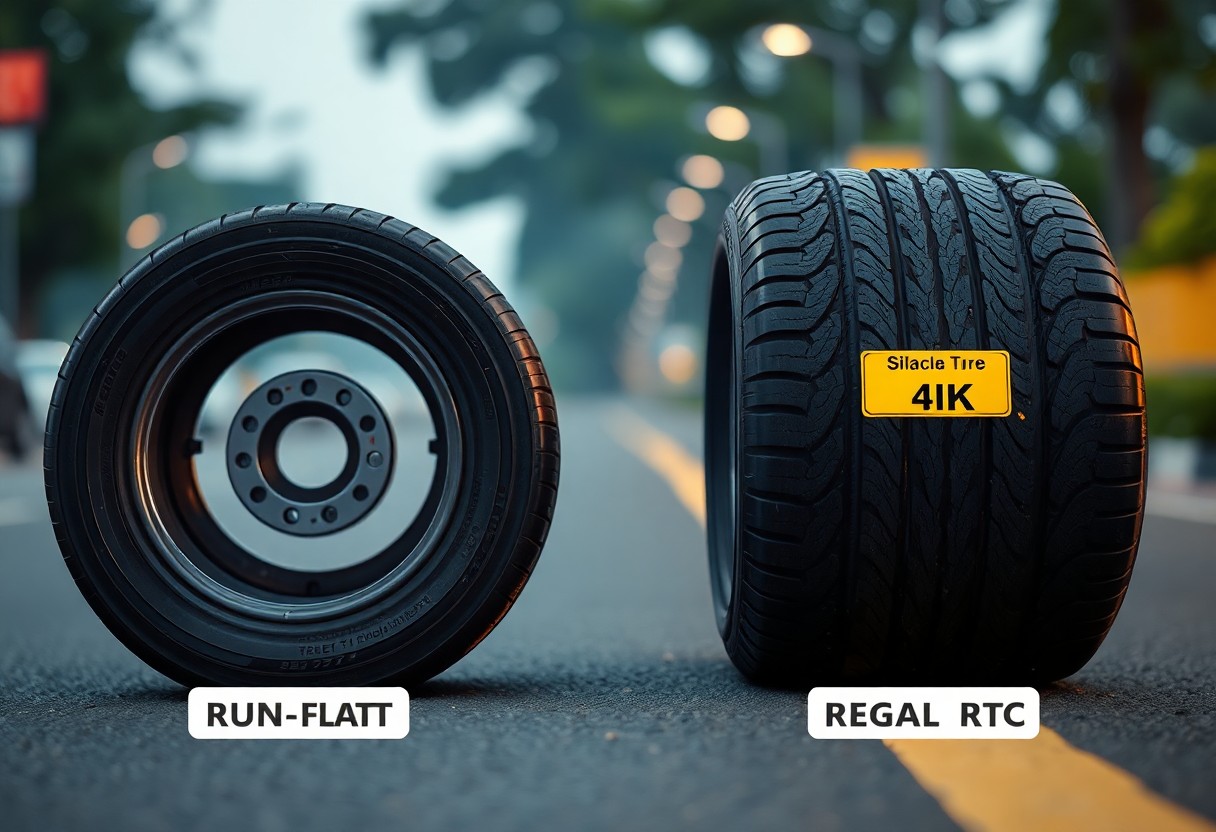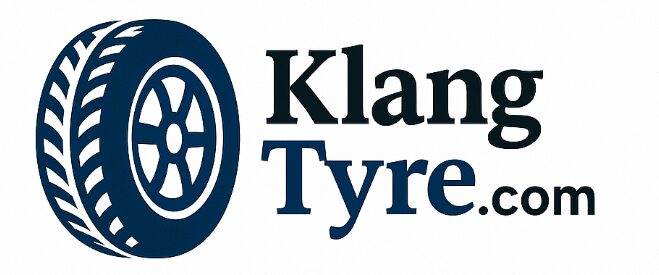Just as you take your car’s performance seriously, so should you consider the type of tyres you use. In Klang, the choice between run flat and regular tyres can significantly impact your driving experience, especially in emergencies. Run flat tyres provide the advantage of allowing you to drive for a limited distance even after losing pressure, offering peace of mind on long journeys. However, traditional tyres may offer better comfort and affordability. Understanding the benefits and drawbacks of each option will help you make an informed decision for your vehicle and safety on the road.

Key Takeaways:
- Run flat tyres allow drivers to continue driving for a limited distance after a puncture, eliminating the immediate need for a spare tire.
- Regular tyres typically offer a smoother ride and better performance in terms of comfort and handling, especially on uneven roads.
- Run flat tyres tend to have a stiffer sidewall, which can lead to a firmer ride and may not provide the same level of shock absorption as regular tyres.
- In terms of cost, run flat tyres are generally more expensive than regular tyres and may require special care and management.
- Regular maintenance and inspections are beneficial for both tyre types, but regular tyres may be easier to repair or replace in case of damage.
- Availability of replacement tyres can vary; run flat tyres may sometimes have limited options compared to regular tyres in local markets.
- Driver preference, vehicle type, and typical driving conditions should be taken into account when deciding between run flat and regular tyres in Klang.

The Mechanics of Performance: How Run Flat and Regular Tyres Differ
Understanding the performance mechanics of run flat and regular tyres sheds light on their advantages and limitations in practical scenarios. Run flat tyres incorporate engineered sidewalls that support the vehicle’s weight even when deflated, allowing you to maintain control and drive for up to 80 km at reduced speeds. In contrast, regular tyres rely solely on air pressure for support, leading to immediate loss of handling ability upon a puncture. This significant design divergence informs not only how each type functions but also shapes your driving experience in various conditions.
Structural Innovations in Run Flat Tyres
Run flat tyres employ innovative structural reinforcements, which enable them to maintain stability even with zero air pressure. The sidewalls are constructed from tougher materials and feature a unique design that prevents the tyre from collapsing, ensuring you have enough support to reach a safe location for repairs.
Conventional Tyre Design and Its Limitations
Conventional tyres depend on maintaining air pressure for their performance, leaving drivers vulnerable to immediate risks when punctured. The absence of additional structural support means that a flat tyre leads to a significant loss of control, endangering both occupants and other road users. Moreover, without a spare tyre on hand, you may find yourself stranded in inconvenient or unsafe locations.
The limitations of conventional tyre designs extend beyond immediate control loss. These tyres are susceptible to punctures from sharp objects, and their reliance on air pressure means that even minor leaks can result in reduced handling and grip. In diverse driving conditions, such as rough terrain or inclement weather, the absence of a backup support system can leave you unprepared for emergencies. Additionally, the inconvenience of needing to stop and change a flat on the roadside poses safety risks that run flat tyres can effectively circumvent, making them a compelling choice for many drivers in Klang.
The Safety Debate: Run Flat Tyres vs Regular Tyres on Klang Roads
In Klang, safety on the roads is a major concern for drivers. Run flat tyres offer a distinct advantage, allowing you to travel up to 80 km at a reduced speed of 80 km/h after a puncture. This feature can be lifesaving, especially on busy roadways. Regular tyres, however, leave you stranded and vulnerable to accidents at the roadside. While both types have their merits, the ability to maintain control and distance post-puncture makes run flat tyres a compelling choice for safety-conscious drivers navigating Klang’s bustling streets.
The Impact of Road Conditions on Performance
Klang’s road conditions can vary significantly, influencing the performance of both run flat and regular tyres. Surfaces riddled with potholes, construction zones, or sudden weather changes can challenge any tyre type. Run flat tyres, engineered to maintain integrity when punctured, can better handle rough terrain by preserving your ability to steer without immediate danger, while regular tyres may succumb to damage more easily in harsher conditions, leaving you at greater risk.
Emergency Handling: When Every Second Counts
In emergencies, the ability to react quickly can make a significant difference. Run flat tyres provide you with the option to maneuver away from danger after a puncture, potentially avoiding accidents or crises. With their sturdier sidewalls, they allow for better control compared to regular tyres, which might leave you in a perilous situation. Thus, if your vehicle is equipped with run flat tyres, you can continue to drive safely until you reach a repair shop, ultimately minimizing risk in urgent scenarios.
Emergency situations can strike unexpectedly, making time your fiercest opponent. Drivers with run flat tyres can maintain a level of composure, steering their vehicle safely away from immediate threats while regular tyres could force you to stop suddenly in hazardous traffic. The average response time in an emergency can drastically affect the outcome, and the ability to accelerate safely after a tyre loss allows you to take proactive measures. Investing in run flat tyres can provide peace of mind, knowing you’re equipped to handle sudden challenges on Klang’s bustling roads.
Cost Considerations: Weighing Value Against Performance
In Klang, determining whether to invest in run flat or regular tyres involves a careful analysis of costs versus benefits. Run flat tyres typically come with a higher initial price tag, reflecting their advanced technology and safety features. However, when considering the potential for fewer tyre changes and reduced likelihood of roadside assistance calls, you might find that the long-term savings can offset the starting expense, making them an attractive option for those prioritizing convenience and peace of mind.
Initial Investment vs Long-Term Savings
Initially, run flat tyres can cost you approximately 20-30% more than regular tyres. Despite the steep upfront price, you could save money over time through fewer replacements and a decreased need for emergency tyre services. Plus, with their durable design, they often outlast typical tyres, allowing you to maximize your investment.
Insurance Implications and Repair Costs
Insurance coverage can vary significantly for run flat versus regular tyres. Premiums may be lower with run flat tyres due to their enhanced safety features, potentially reducing your overall insurance costs. Additionally, repair costs can be a factor; while regular tyres are often more straightforward to fix, the robust design of run flats may lead to higher repair bills when damage occurs. In many instances, repairing a run flat can be more complicated and costly, which is worth considering when budgeting for your vehicle’s long-term maintenance.
Understanding these insurance implications is key. Your provider may classify run flat tyres as a safer option, potentially reflecting this in better premiums. However, should an issue arise, the higher repair costs compared to traditional tyres could offset those savings. Assess how your policy treats tyre damage and repairs, as this will significantly impact your overall expenditure and should inform your decision on which tyre type is more economical for your needs in Klang.

Comfort and Driving Experience: Noise, Vibration, and Handling
When evaluating comfort and driving experience, the differences between run flat and regular tyres become evident in terms of noise, vibration, and handling. Regular tyres typically offer a quieter and smoother ride, owing to their softer rubber compound, which absorbs road imperfections better. On the other hand, while run flat tyres are designed for mobility after a puncture, their stiffer sidewalls can lead to increased road noise and vibration, compromising overall comfort during your drives in Klang. This aspect becomes particularly significant in urban areas where potholes and rough surfaces are common.
Ride Quality and Comfort Levels
Your ride quality with regular tyres tends to be more comfortable due to enhanced shock absorption, making them ideal for daily commutes in Klang’s bustling traffic. In contrast, run flat tyres, despite their safety benefits, may transfer more road imperfections to your vehicle’s cabin, affecting comfort over long distances or rough terrains.
Feedback and Control on Different Surfaces
Feedback and control play a vital role in how well your vehicle performs on diverse road surfaces. Regular tyres excel in providing tactile feedback, allowing you to feel the intricacies of the road, which enhances your driving confidence. Run flat tyres can sometimes diminish this feedback due to their rigidity, resulting in less responsiveness on uneven surfaces.
High-performance vehicles often equipped with run flat tyres may experience diminished traction, especially on wet or uneven conditions, where the stiffer sidewalls can lead to a harsh driving experience. Regular tyres, however, adapt better, allowing for smoother cornering and improved grip, which is particularly beneficial on the slick roads found in Klang during rain. The ability to detect subtle changes in road texture can be crucial, providing you with better control and safety during every maneuver.
The Future of Tyre Technology in Klang: What’s Next?
Innovations in tyre technology are on the rise in Klang, with manufacturers focusing on enhancing safety, performance, and sustainability. Research into self-sealing and smart tyres that can monitor pressure and tread wear in real-time represents a leap forward. As the automotive industry shifts towards electric and autonomous vehicles, expect tyres designed specifically for these applications, offering improved efficiency and longevity.
Innovative Developments on the Horizon
Developments like the use of advanced materials, such as silica for improved fuel efficiency, and airless tyres are becoming prevalent. These innovations promise to enhance durability while minimizing maintenance needs. Additionally, manufacturers are experimenting with eco-friendly manufacturing processes, aligning tyre production with sustainability goals.
Consumer Trends and Environmental Considerations
Consumers in Klang are increasingly prioritizing environmentally-friendly products. Tyre manufacturers are responding by creating products that are not only efficient but also sustainably sourced and recyclable. This shift stems from heightened awareness about the environmental impacts of traditional tyres and a desire for greener alternatives.
With rising environmental awareness, you’re likely to see a shift in consumer preferences towards tyres made from renewable materials and designs that minimize their ecological footprint. As electric vehicles gain traction, a demand for low-rolling-resistance tyres becomes apparent, which enhances energy efficiency and extends battery life. Brands that emphasize sustainability in their marketing and product offerings are positioning themselves to appeal to this environmentally-conscious demographic, making it vital for you to consider how your tyre choices can align with a more sustainable lifestyle.
Conclusion
On the whole, choosing between run flat and regular tyres in Klang depends on your driving habits and preferences. If you value convenience and safety, run flat tyres may be the better option for you, as they allow you to drive short distances after a puncture. However, if you prioritize comfort and performance, regular tyres could be more suitable. Assess your needs and consider factors like cost and availability before making a decision; ultimately, the right choice will enhance your driving experience.
FAQ
Q: What are run flat tyres?
A: Run flat tyres are specially designed tyres that can continue to be driven on even after losing air pressure. They have reinforced sidewalls that provide support and stability to the vehicle, allowing drivers to cover a limited distance (typically 50 miles) at reduced speeds (usually up to 50 mph) before needing a replacement or repair.
Q: What are regular tyres?
A: Regular tyres, also known as conventional tyres, are standard tyres that require proper inflation to function effectively. Once they lose air, they cannot be used and must be replaced or repaired. They depend on the correct air pressure for optimal handling, performance, and safety.
Q: What are the primary benefits of run flat tyres?
A: The key benefits of run flat tyres include increased safety by allowing drivers to continue driving safely even after a puncture, eliminating the need for immediate roadside assistance, and providing added convenience as they remove the necessity of carrying a spare tyre. Additionally, they can enhance fuel efficiency due to their design.
Q: What are the disadvantages of run flat tyres?
A: Some disadvantages of run flat tyres include a generally harsher ride due to their stiffer sidewalls, potentially higher costs compared to regular tyres, and limited options for different weather conditions. Additionally, finding a replacement can sometimes be more challenging since not all vehicle service centres stock them.
Q: Which type of tyre is more affordable in the long run?
A: Although run flat tyres may have a higher initial purchase price, the absence of a spare tyre and the convenience offered can lead to savings in the long run. However, regular tyres may have lower upfront costs, but the need for a spare tyre and potentially more frequent replacements can add up. It ultimately depends on individual driving habits and preferences.
Q: Which type of tyre is better suited for Klang’s road conditions?
A: Klang’s diverse road conditions may benefit from regular tyres, particularly if drivers frequently drive on bumpy or uneven surfaces, as regular tyres may offer better comfort and flexibility. However, run flat tyres could be advantageous for urban driving and long-distance travel, where puncture risks are present. Ultimately, it depends on individual driving conditions and needs.
Q: Can run flat tyres be repaired like regular tyres?
A: Run flat tyres are generally more difficult to repair than regular tyres. If a run flat tyre has suffered a puncture, it is often recommended to replace it instead of attempting a repair due to potential internal damage and the limitations on the type of damage that can be safely repaired. It is important to consult a professional for an accurate assessment of any tyre damage.
